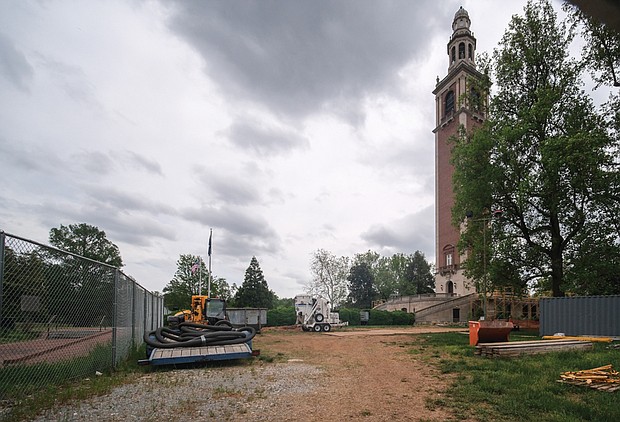
Multiple construction projects are underway at the Virginia War Memorial Carillon in Richmond. In 2016, Elizabeth L. O’Leary of the Carillon Civic Association described the historic monument: Rising a lofty 240 feet in the heart of Richmond’s William Byrd Park stands the Virginia War Memorial Carillon — the Commonwealth’s official monument to the approximately 3,700 men and women from the state who died as a result of World War I. The Georgian-revival tower houses a massive musical instrument made up of 53 fixed bronze bells of varying sizes, still played today by a carillonneur who strikes a pedal keyboard just below the bell chamber. Dedicated on October 15, 1932 — 14 years after the end of the Great War — the Carillon opened amidst a swirl of patriotic fervor and controversy. Its original design, commissioned several years earlier by the Virginia General Assembly from celebrated Philadelphia architect Paul Cret, called for a sleek classicized temple. Shortly after ground breaking, a citizen’s committee waged a successful popular campaign to build a carillon instead. Building the more expensive “singing tower” — a brick encased steel frame that originally supported the heavy bells cast by John Taylor & Co. of Loughborough, England — required additional fundraising to achieve the final cost of $325,000.





